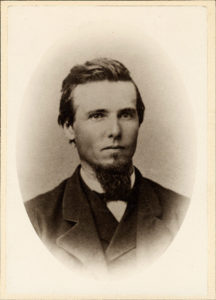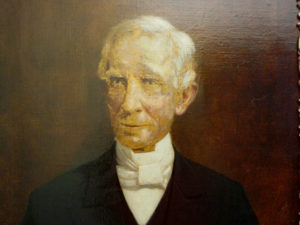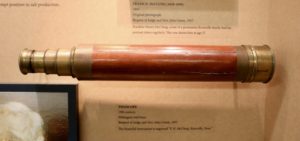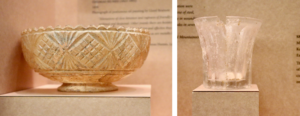
FRANK H. McCLUNG (1828-1898), 1865 Original photograph Bequest of Judge and Mrs. John Green, 1957 Franklin Henry McClung, the scion of a prominent Knoxville family, had his portrait taken regularly. This one shows him at age 37.
Knoxville was a growing community undergoing social change. The arrival of the railroad came with an influx of tradesmen and immigrant laborers with few local ties, but it also strengthened trading connections with the southern market. When war descended upon Knoxville, the vast majority hoped to be able to ride out the national turmoil with some sort of local compromise. As time went on, Confederate and Union sympathizers alike became more polarized, dividing the town almost 50/50. In the surrounding area, Union support predominated mainly because the independent mountaineers did not see themselves uniting with the southern planters. Two individuals, both associated with what came to be known as the University of Tennessee, personify here the differing local sentiments.

THOMAS HUMES (1815-1892), 1896, Photograph of posthumous oil painting by Lloyd Branson “Alienations of close kinsmen and ruptures of friendly relation were widened and deepened. Other swords there are besides those of steel, wielded in civil wars. Quite as sharp and effective they are in wounding feelings and cutting through social ties, as are metallic blades in severing limbs and piercing bodies.” Thomas Humes, Loyal Mountaineers
Frank H. McClung, in whose memory this museum was named, was a member of a large and prosperous founding family of wholesale merchants. He and all of the McClungs were Confederates, and, as a 33-year-old family man, he joined the “Home Guard,” working as a clerk in the Ordnance department. In June of 1863, he undoubtedly participated in the defense of Knoxville against an artillery barrage by Union Col. William P. Sanders. Just before the Federal army marched into town in September, Frank left for Saltville, Virginia, where he spent the rest of the war working for his uncle in a draft-exempt position in salt production.
Thomas Humes was from another old Knoxville family. Thirteen years older than Frank McClung, they certainly would have known of each other and perhaps socialized prior to the war. An educated man, Humes began his career as a newspaper publisher, then studied for the ministry. When the war began, he was the rector at Saint John’s Episcopal Church. Humes was an ardent Unionist and refused to conduct services while the town was under Confederate control. After Federal troops arrived, he resumed services at Gen. Bunside’s request.
Up Next: Two Armies Race for Knoxville

TELESCOPE, 19th century, Mahogany and brass
Bequest of Judge and Mrs. John Green, 1957
The beautiful instrument is engraved “F. H. McClung, Knoxville, Tenn.”

SMOKING PIPE, Mid-19th century, Kaolin
Excavated 1980
The Museum participated in archaeological investigations in 1980 at the site of the home of Thomas Humes. Among many household items discovered in a cistern was this molded tobacco pipe. The home was located on Church Street on the current site of the Hilton Hotel in downtown Knoxville.

BOWL AND TUMBLER, Mid 19th century, Pressed leaded glass
Excavated 1980
When cisterns were no longer needed, they often became convenient places to dispose of broken household items. The discolored patina resulted from deposition in Humes’ cistern.
